The World Heritage Listed prison ruins at Port Arthur are Australia's best preserved convict ruins. The site is vast and its presentation is well done. You'll get a sense of the horror of life for convicts in the Van Diemen's Land system for re-offenders.
Even those with a passing interest in history will find Port Arthur a worthwhile experience. If your interest runs deeper, make a couple of visits over the two day validity of the entry ticket.
Crowds can be an issue so it's good to have time at the site before the day-trippers arrive and after they leave. Plan your time to avoid the crowds. Avoid weekends if you can. Spend a few days in the area.
Getting to Port Arthur
Visitors to Port Arthur arrive either by self-drive car or on a tour coach. The journey from Hobart is just under 100kms and takes around 90 minutes. There is no public transport option. There is a coach shuttle to Port Arthur however its present schedule leaves only a few hours for exploration of the site unless you stay overnight.
Even day-trippers should spend some time exploring the Tasman Peninsula. You can check out our Tasman Peninsula guide here.
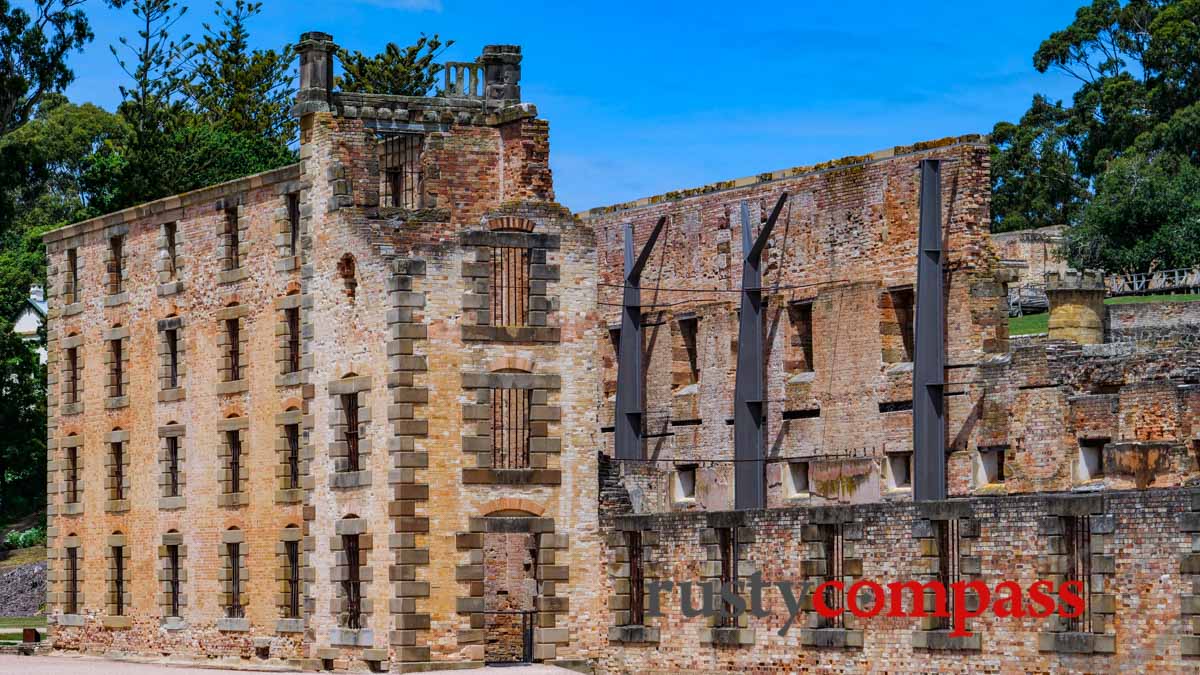
Photo: Mark Bowyer Port Arthur convict ruins
Tickets
Port Arthur tickets are valid for 2 days and cost $40 (child $18 and concession $30). This includes a 45 minute orientation tour of the site and a boat cruise. It's excellent value for money though the tours - usually in large groups - are inevitably mass-produced and rigid.
At present, (June 2021) Port Arthur is only open from 10 - 5pm. We hope these hours are extended as crowds increase. The place is visually best in the early morning and late afternoon.
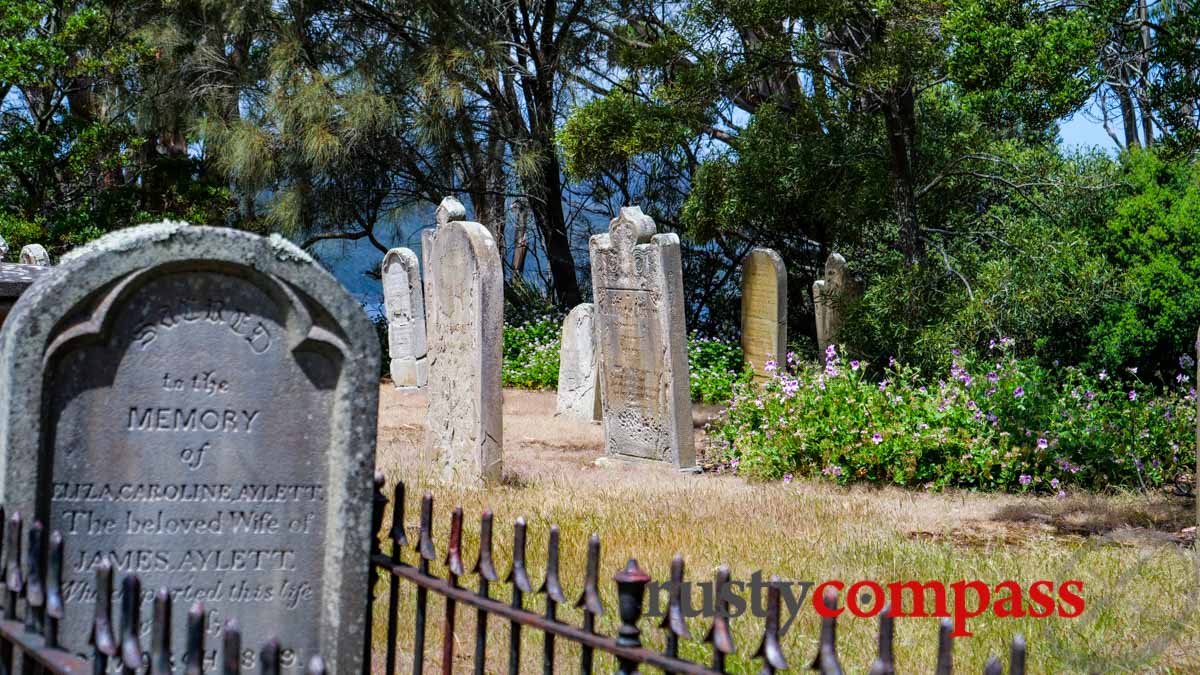
Photo: Mark Bowyer Isle of the Dead, Port Arthur. Many convicts didn't get headstones.
What to do at Port Arthur
Exploring the Port Arthur site is straightforward. Most visitors start with the 45 minute tour (included in ticket price). The tour will give you a good introduction. From there, you can explore freely, taking the short, included, boat cruise at your leisure.
You will visit the main penitentiary and surrounding structures. There is also the Seperate Prison, built later, and the Victorian village, including gardens and church, where the officers and their families lived.
Point Puer was the prison for boys nearby Port Arthur. There is little evidence of the prison on the site remaining. This was Britain's first juvenile institution. More than 3000 boys, some as young as 10, passed through here. Access is presently restricted to occasional tours.
The Isle of the Dead is where prisoners and other residents of Port Arthur were buried. It's only accessible on a tour.
Most convicts were dumped in mass graves on the island. The tombstones are mostly on the graves of officials and their family members. The Isle of the Dead tour I did ($25) was rushed and rigid. I wouldn't recommend it unless you are very interested in the history.
There are also Ghost Tours offered in the evenings.
We recommend the following itinerary for those wanting to get a proper look at the site and the nearby Coal Mines Historic Site.
Port Arthur 2 day suggested itinerary
Day 1: 4 hours exploring in the afternoon. Stay late to see the place without crowds.
Day 2: 4 hours exploring in the morning (start early) followed by a visit to the Coal Mines Historic site - a Port Arthur era convict-operated coal mining facility 30kms from Port Arthur in a beautiful setting.
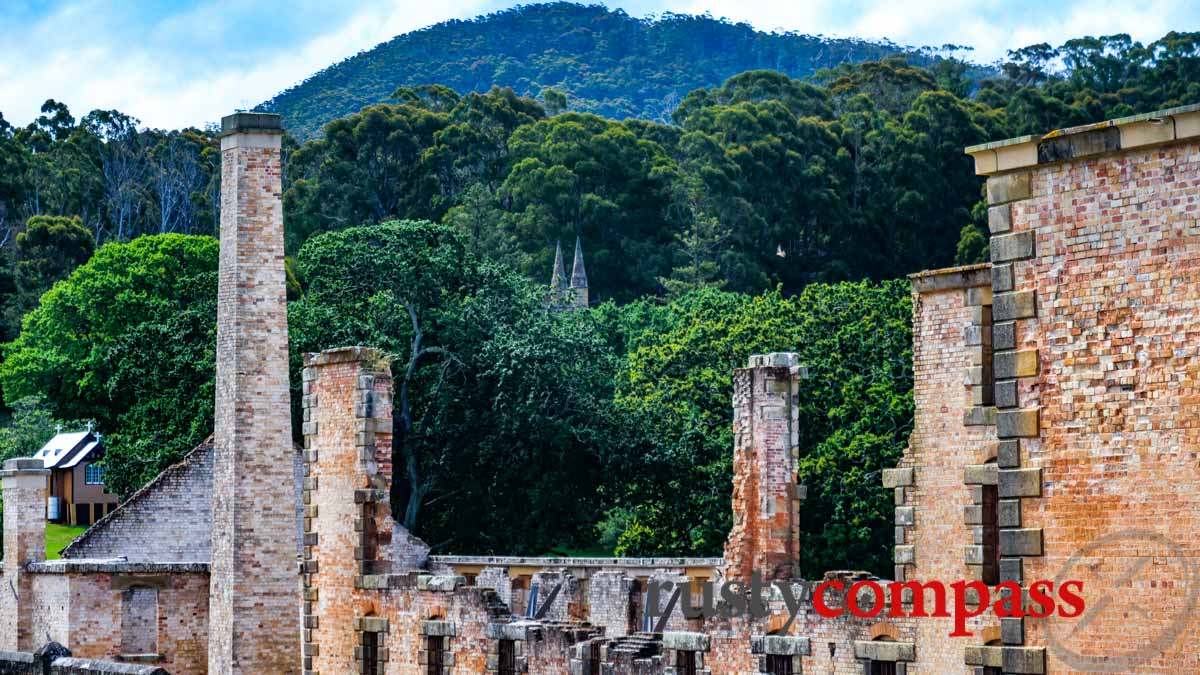
Photo: Mark Bowyer Port Arthur convict ruins
Port Arthur - brief history
Just under half of all convicts sent to Australia by Britain in the first half of the 19th century, ended up in Van Diemen's Land - now known as Tasmania. 13,000 of these were held at Port Arthur during its 4 decades of operation from 1833.
By the 1830s, convict numbers in Van Diemen's Land had grown to the point where a proper penitentiary was required. The barbaric settlement at Macquarie Harbour was difficult to access from Hobart.
George Arthur, the Governor of Van Diemen's Land, petitioned his superiors in London to approve the creation of a new major facility to function as a secondary prison - a place for re-offending convicts.
Port Arthur was renowned for its severity and strict discipline. But it's also understood that floggings and acts of gratuitous cruelty were less common here than some other places in the penal colony network. Author Robert Hughes in his recommended book The Fatal Shore wrote that Port Arthur "was conceived and run as a purgatorial grinding mill rather than a torture chamber".
Solitary confinement and silence were the preferred tools for breaking wayward prisoners at Port Arthur. This was a laboratory for the testing of evolving ideas around incarceration and punishment.
British philosopher Jeremy Bentham, the creator of the panopticon prison concept, was influential in Port Arthur's design. The Separate Prison complex marked a shift in thinking around incarceration from harsh physical treatment like flogging, chains and labour, to psychological punishment like solitary confinement.
Those hardened convicts who couldn't be broken at Port Arthur, were sent to the nearby coal mines, now known as the Coal Mines Historic Site. This was Tasmania's first coal mine and was a place renowned for cruelty. It's 30kms from Port Arthur and an interesting add-on to your visit to the area. It's another World Heritage Listed convict site.
Port Arthur began as a timberyard in 1830 and commercial considerations were never far from the minds of the colonial rulers.
The timberyard expanded and a shipbuilding facility opened. The nearby coal mines were another important source of economic value from the convict system. There were other industrial enterprises on the site too - ensuring the prison paid its way.
There were many attempted escapes from Port Arthur and few successes. The wild seas, rugged terrain and the narrow isthmus connecting the Tasman Peninsula, all favoured the gaoler and made successful escape dangerous and rare.
Transportation of convicts to Van Diemen's Land ceased in 1853. Two years later, drawing a line under the convict era, the name of the island changed to Tasmania. It was an early effort at rebranding. Port Arthur continued to operate as a prison for another two decades and finally closed in 1877.
Port Arthur's life as a tourist attraction began soon after its closure. There was a national fascination with the site that has continued to this day. The writings of Marcus Clarke and Anthony Trollope, helped build the legend around the Port Arthur prison. Clarke's For the term of his natural life has also been made into film on two occasions.
In the 1890s, fire swept through the site destroying some structures and causing major damage to others. Port Arthur remains a site of academic interest for its preservation and heritage methods.
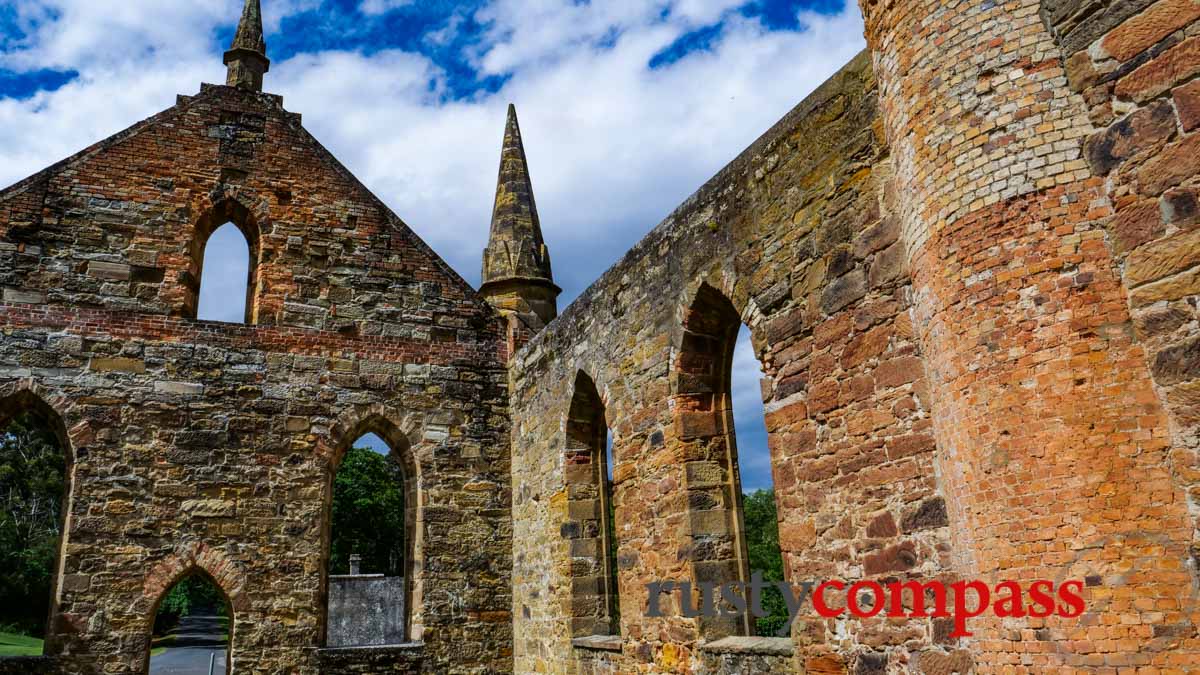
Photo: Mark Bowyer The church at Port Arthur
The Port Arthur Massacre 1996
The Port Arthur site was the location for the Port Arthur massacre of April 1996 in which 35 people were killed. The massacre was the worst mass-killing in modern Australian history. The Australian government, under Prime Minister John Howard, instituted major changes to gun control laws at the time. These laws have been effective in preventing any repetition of such a crime. There is a memorial on the site to those killed.
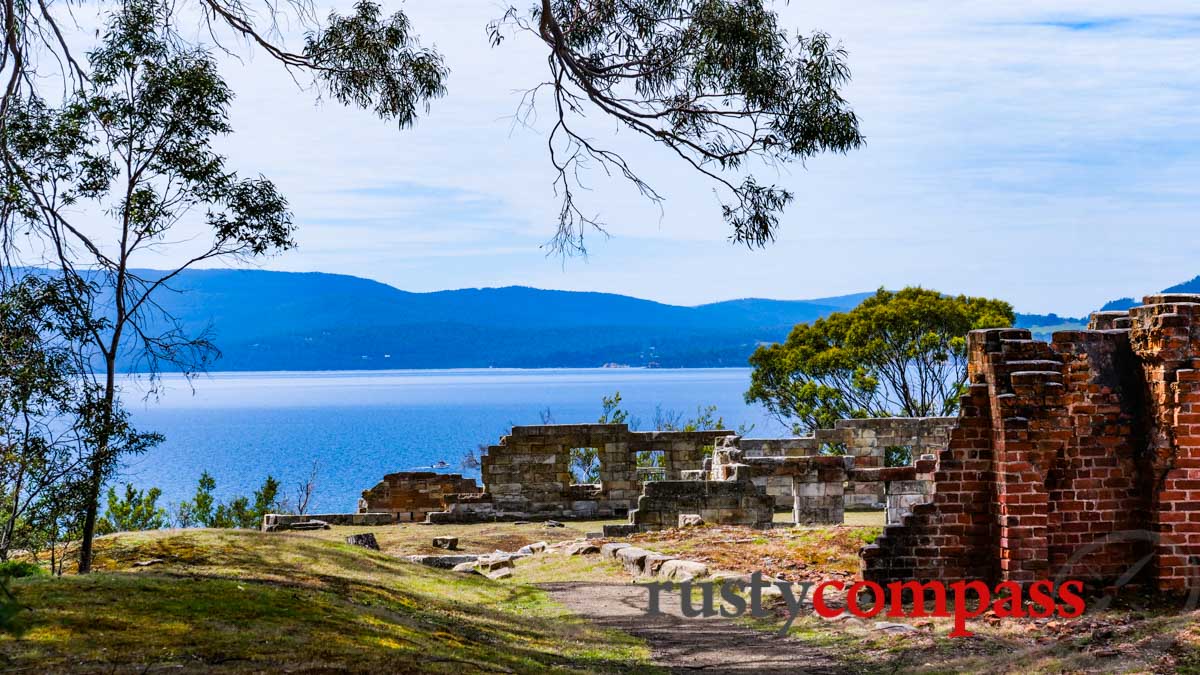
Photo: Mark Bowyer Coal Mines Historic Site ruins
What's Nearby Port Arthur?
The Tasman Peninsula is a spectacular stretch of Tasmanian coastline. You can also visit the Coal Mines Historic Site which is another World Heritage Listed Convict site 30kms from Port Arthur. The old mines are highly recommended for those interested in the history of the area. They were used as further punishment for convicts too unruly for Port Arthur.
The nearby Tasman National Park is where the famous Three Capes walk can be taken. The park is excellent for a day trip or longer hikes.
Have a look at our guide to the Tasman Peninsula here.
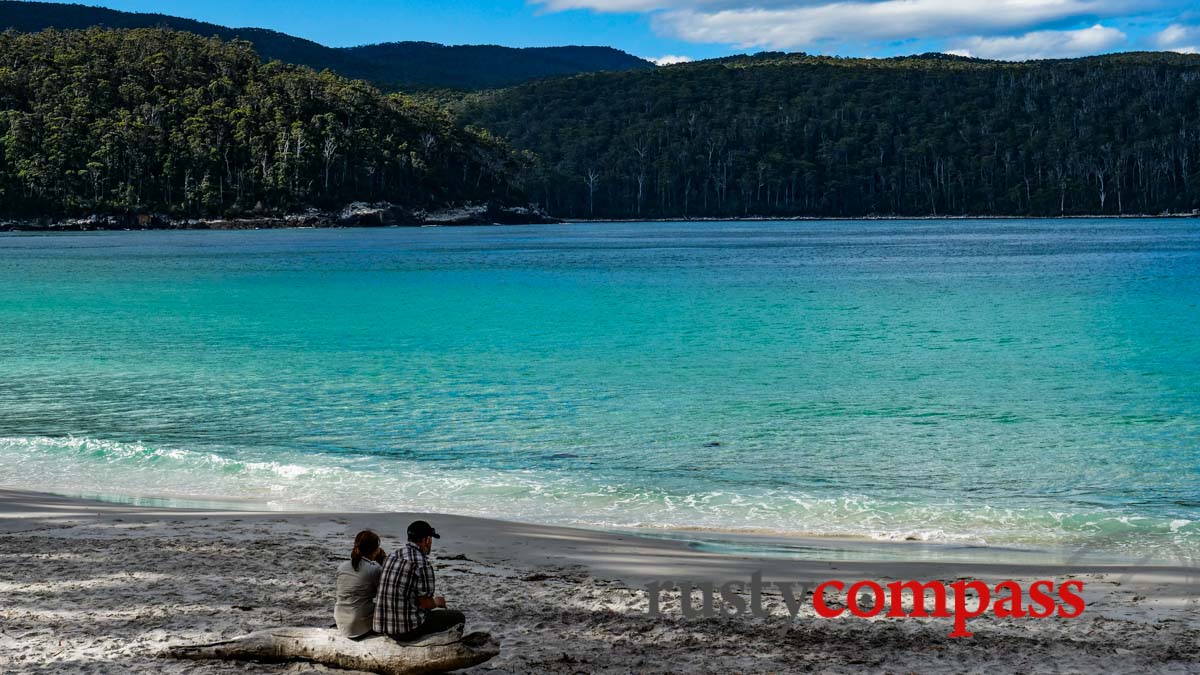
Photo: Mark Bowyer Fortescue Bay, Tasman National Park

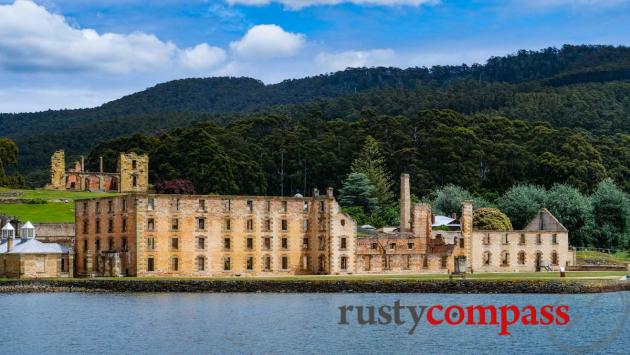
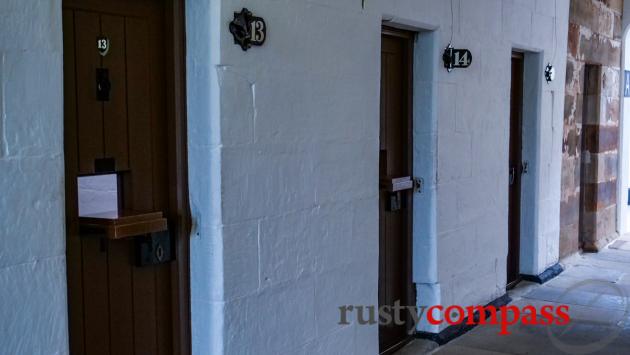
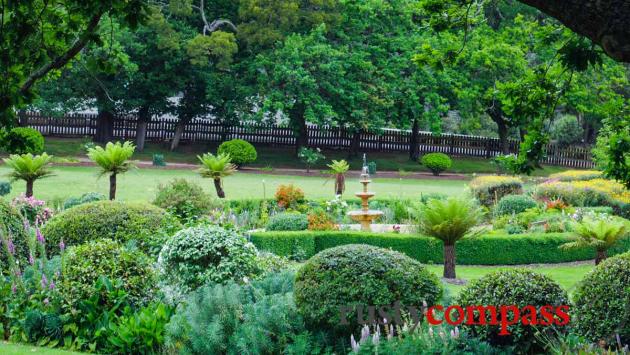
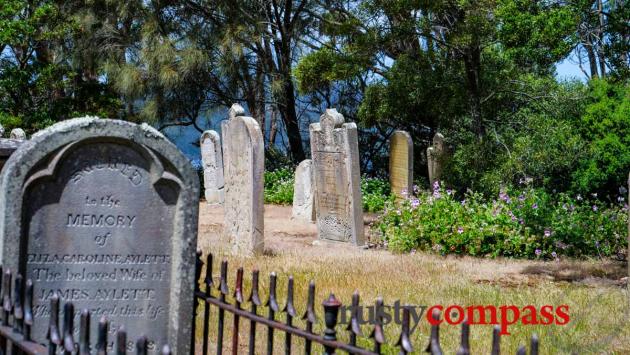




There are no comments yet.